Laboratory for sustainable construction
The House of Natural Resources (HoNR) is a flagship project for a hardwood building. Today marked the inauguration of the office building on ETH’s Hönggerberg campus after 18 months of construction. It is an exciting development for researchers at ETH Zurich as the building will serve as a research laboratory for sustainable construction.
Office buildings rarely cause a stir, but the HoNR is quite different: a simple frame construction makes it possible to customise the floor plan as desired by arrangement of the inner and outer walls. Transparent façades and a jointless outer shell also create a pleasant working environment. Furthermore, the HoNR is more than just an innovative office building; it will also serve as ETH Zurich’s research laboratory for sustainable construction using hardwood.
Six professors from the Institutes of Structural Engineering, Building Materials, and Technology in Architecture and their research groups were involved in the construction of the building, implementing findings directly from their research projects. The inauguration does not mean their work is complete – they now want to test the technologies over a longer period and find out where their strengths and weaknesses lie. ETH President Lino Guzzella says of this unique new building: «The House of Natural Resources is a good example of on-site interdisciplinarity. It shows how wood, an indigenous raw material, can be used in a sustainable and technically smart way.»
Adaptive solar modules
One testing ground is the façade of the building: on one side of the building, scientists have assembled an adaptive solar façade that generates electricity and helps regulate the building’s energy requirements for heating and cooling. The façade consists of mobile modules of thin film solar cells, which move by compressed air-controlled drives. With these actuators, the solar cells face towards the sun and also adapt to the heat and lighting requirements of the building, in particular the needs of the users.
In future, the scientists envisage a solar element system that will track the sun using a special bi-layer wood module that exploits wood’s tendency to swell and shrink upon changes in relative humidity. Two layers of wood are glued together with perpendicular fibre directions. Upon changes in relative humidity, the layers bend accordingly and create a moveable wood element. As relative humidity decreases during a sunny day and rises in the late afternoon and at night, the bi-layer wood elements can work as a natural drive for solar modules to track the sun.
The scientists have also developed new surface coatings for wood façades that provide enhanced UV protection and water repellency. Such façade elements will now be tested on the actual building for their outdoor durability.
House of Natural Resources
-
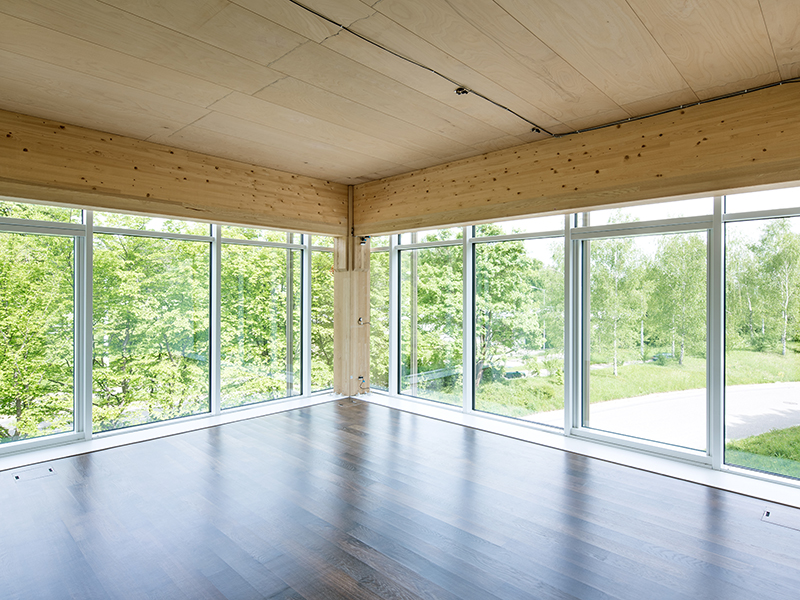
Offices in the House of Natural Resources (Photo: ETH Zürich/Marco Carocari). -
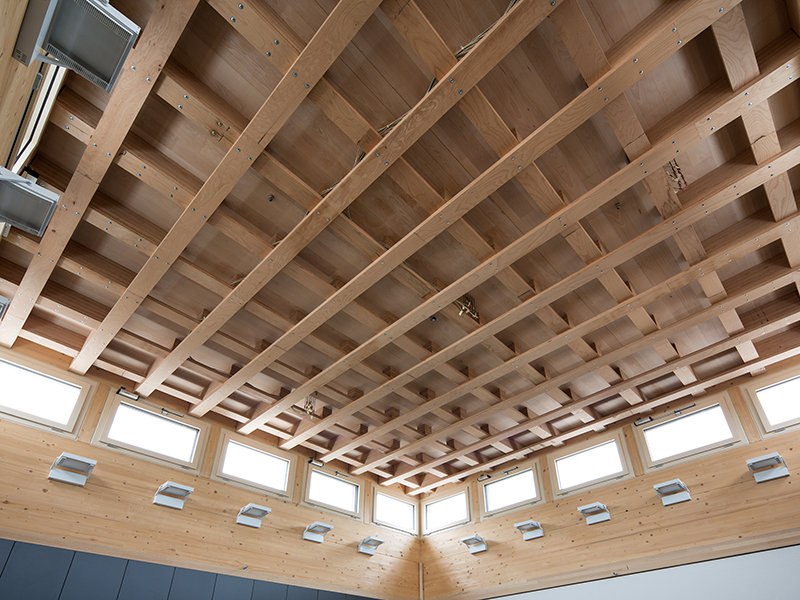
Roof structure with a beech wood slab (Photo: ETH Zürich/Marco Carocari). -
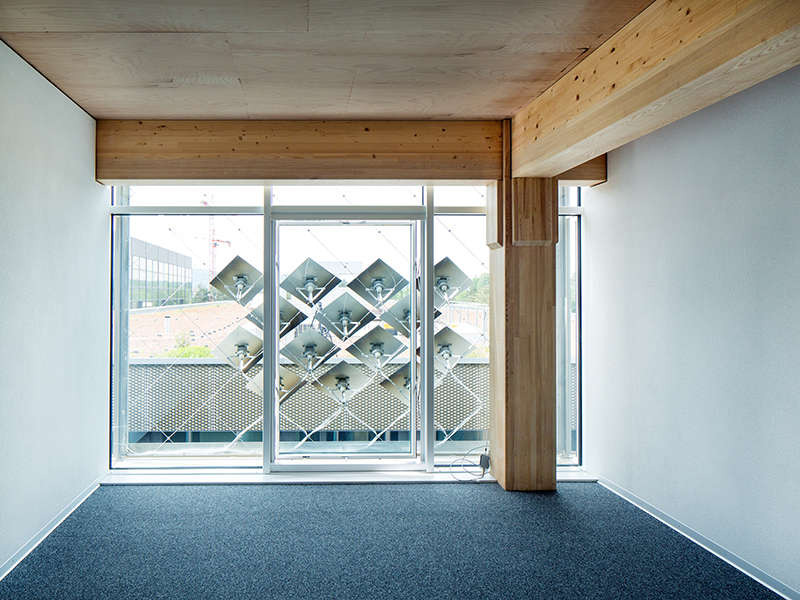
Office in the HoNR with the adaptive solar façade (Photo: ETH Zürich/Marco Carocari). -
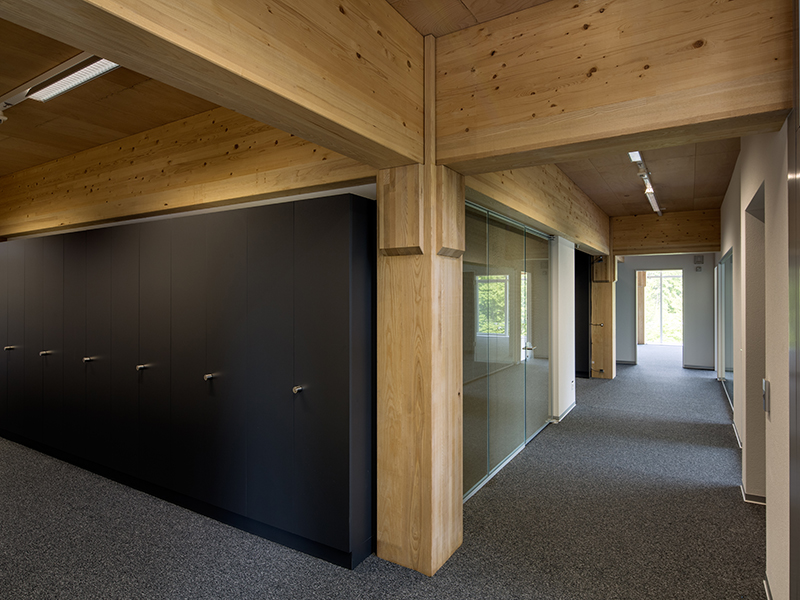
Node area ot he wooden framework (Photo: ETH Zürich/Marco Carocari). -
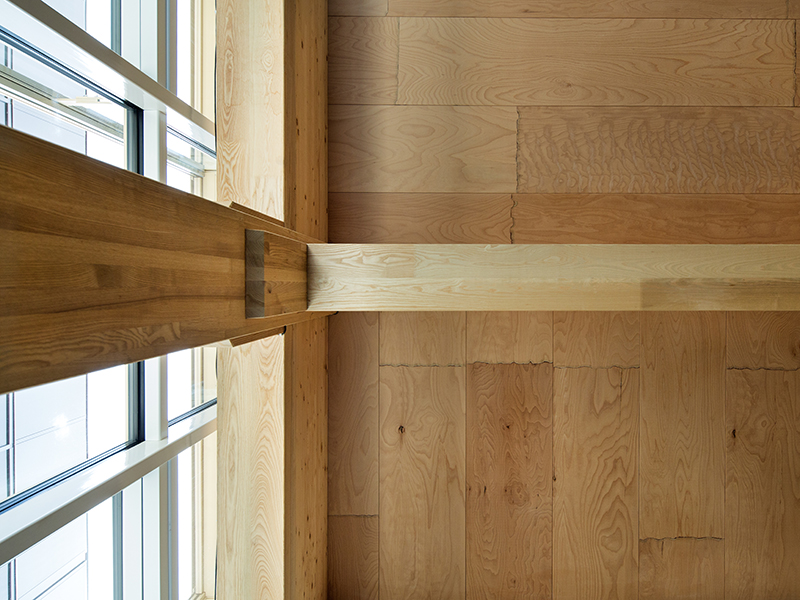
Wood-concrete composite slab (Photo: ETH Zürich/Marco Carocari). -
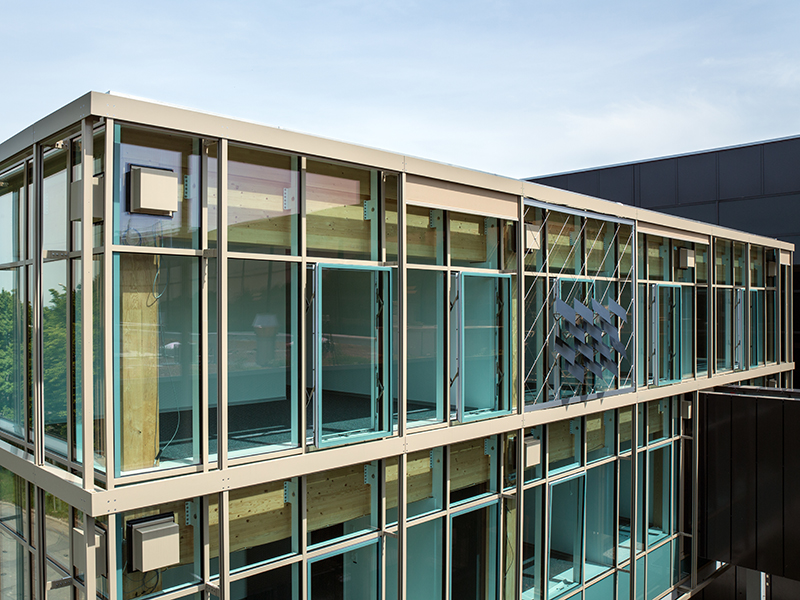
Adaptive solar façade on one side of the building (Photo: ETH Zürich/Marco Carocari).
World firsts for Swiss wood
The HoNR is not only unique in its innovations, but also in its construction: it uses the first wood-concrete composite slab made of beech wood from Swiss forests. A beech wood plate approximately four centimetres thick is used both as formwork and reinforcement, and also provides an aesthetically pleasing surface. The new composite slab has similar load-bearing properties as a reinforced concrete slab, the most commonly used load-bearing floor element in Switzerland. Another unique feature is the roof structure with a beech wood slab. The beech lamellas are arranged crosswise, which distributes the loads in two directions as in a concrete slab.
The frame structure of the HoNR is made of Swiss wood, with the columns made entirely of ash and the beams made of a combination of ash and spruce to increase their strength. Additionally, all the beams are post-tensioned with a cable running through the inside of the wood. As a result, they centre themselves, meaning that the entire frame structure is particularly flexible and significantly more earthquake-resistant.
Monitoring wood’s properties
ETH Zurich researchers have installed a comprehensive monitoring system in the HoNR to capture how the building behaves over the years: they will measure the moisture in the wood frame construction and measure deformations with the help of a tachymeter. Special sensors will measure the relative displacement between wood and concrete in the composite floor. The researchers set up a dense sensor network during construction to analyse how the frame structure behaves, and with 16 load cells they can also measure the tensile force in each tensioning cable.
The effectiveness of the new technology will be observed through daily use. «We will document user satisfaction with the building,» explains project leader Andrea Frangi, Professor of Timber Engineering at the Institute of Structural Engineering at ETH Zurich. He hopes that the findings of the project will also inspire the Swiss forest industry, as he sees great potential for Switzerland in timber construction. The proportion of deciduous trees in Swiss forests is increasing as a result of global warming. «Swiss wood has a lot of potential,» he says. «We hope that companies recognise this and continue to pursue our approach.»
«Sustainable construction» as a key strategic area
ETH Zurich has defined «sustainable construction» as a key strategic area. The House of Natural Resources is a research, teaching and demonstration building which ETH Zurich is using to prove that its research can be applied to this sector while facilitating interdisciplinary research.
Alongside the House of Natural Resources, ETH Zurich has also created a number of new professorships that strengthen its existing expertise in research and teaching in the field of sustainable construction. Additional goals are to intensify interdisciplinary research work in this key area, to promote the transfer of knowledge, and to support the education of future engineers of the construction industry.
The planning and building costs for the HoNR amount to around 7 million Swiss francs. Part of the financing was provided by the ETH Zurich Foundation through donations. The Federal Office for the Environment (FOEN) is also offering financial support for the HoNR’s construction in the form of 500,000 Swiss francs from the Environmental Technology Promotion programme. With its Timber Action Plan, FOEN is promoting the increased use of hardwood as a material, such as in the construction sector. Along with FOEN, the EU’s Climate-KIC initiative is also an important partner of the HoNR. The Climate-KIC «Building Technologies Accelerator» (BTA) flagship project, in which ETH Zurich is the leading partner, focuses on the development and market launch of technologies that lead to measurable reductions in CO2. Over the next six years, Climate-KIC will be contributing several million Swiss francs to ETH technology development in the sustainable building sector. The HoNR, which is one of six European Living Labs in the BTA project, is intended to help establish new building technologies in the market more quickly. The research projects were also supported by the Commission for Technology and Innovation (CTI) as well as by the National Research Programme «Resource Wood” (NRP 66).
The HoNR’s structure consists of 80% local wood and is therefore recognised by Lignum (the Swiss timber industry association) with the «Swiss wood» mark of origin.
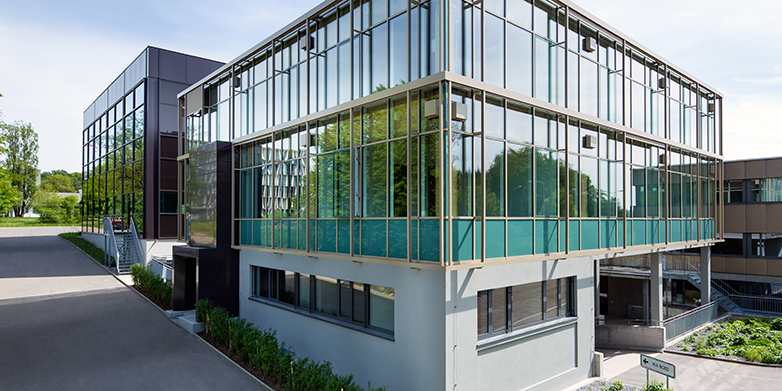
Comments
No comments yet